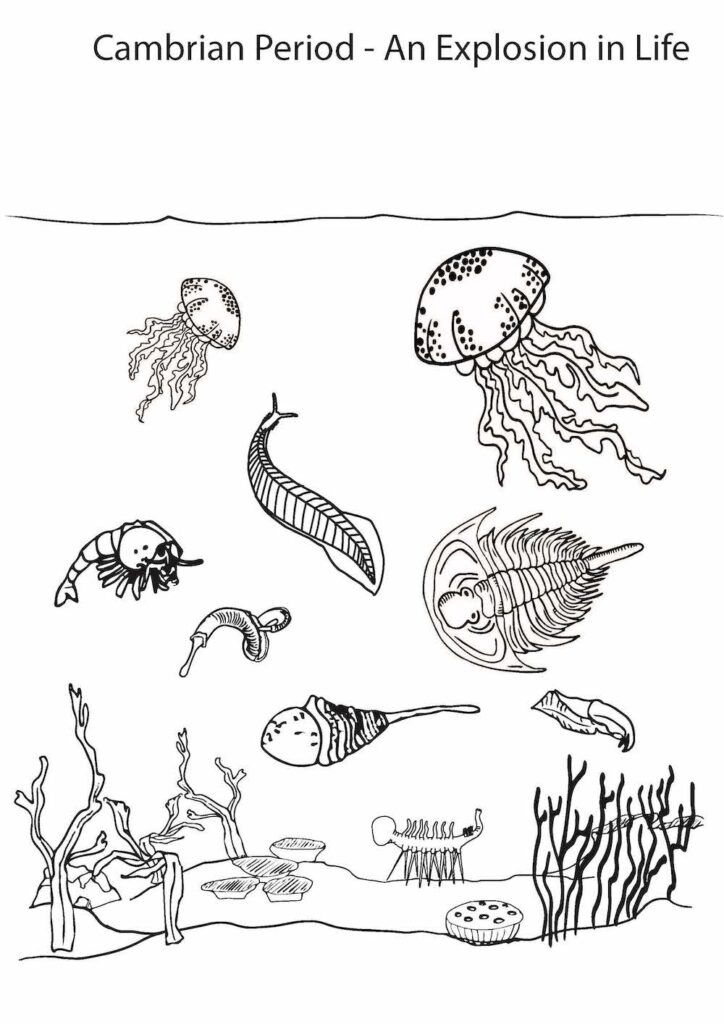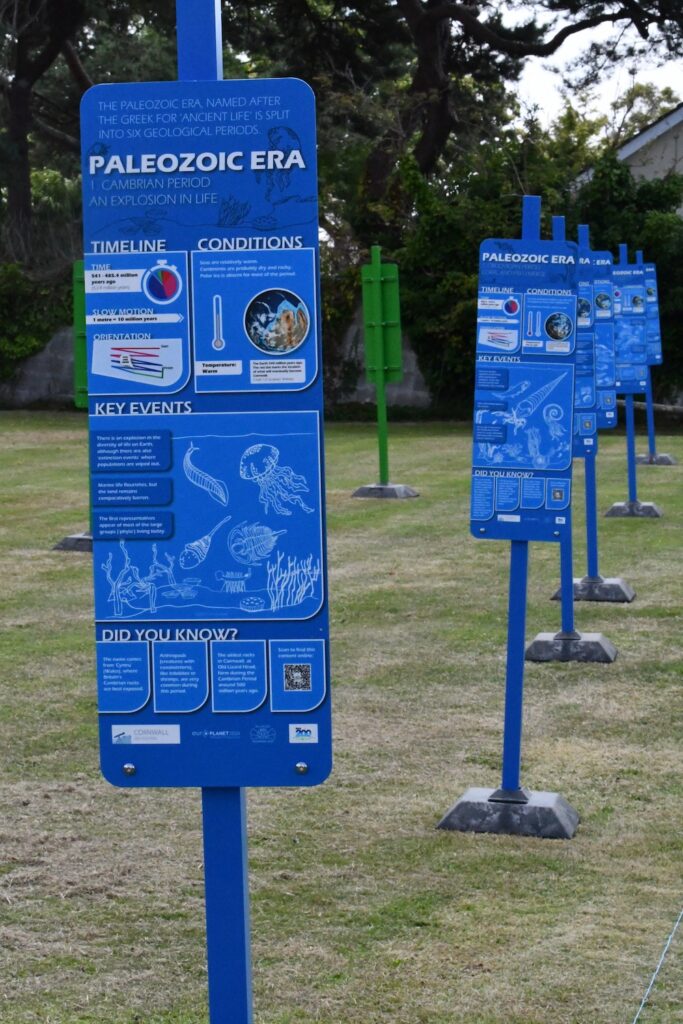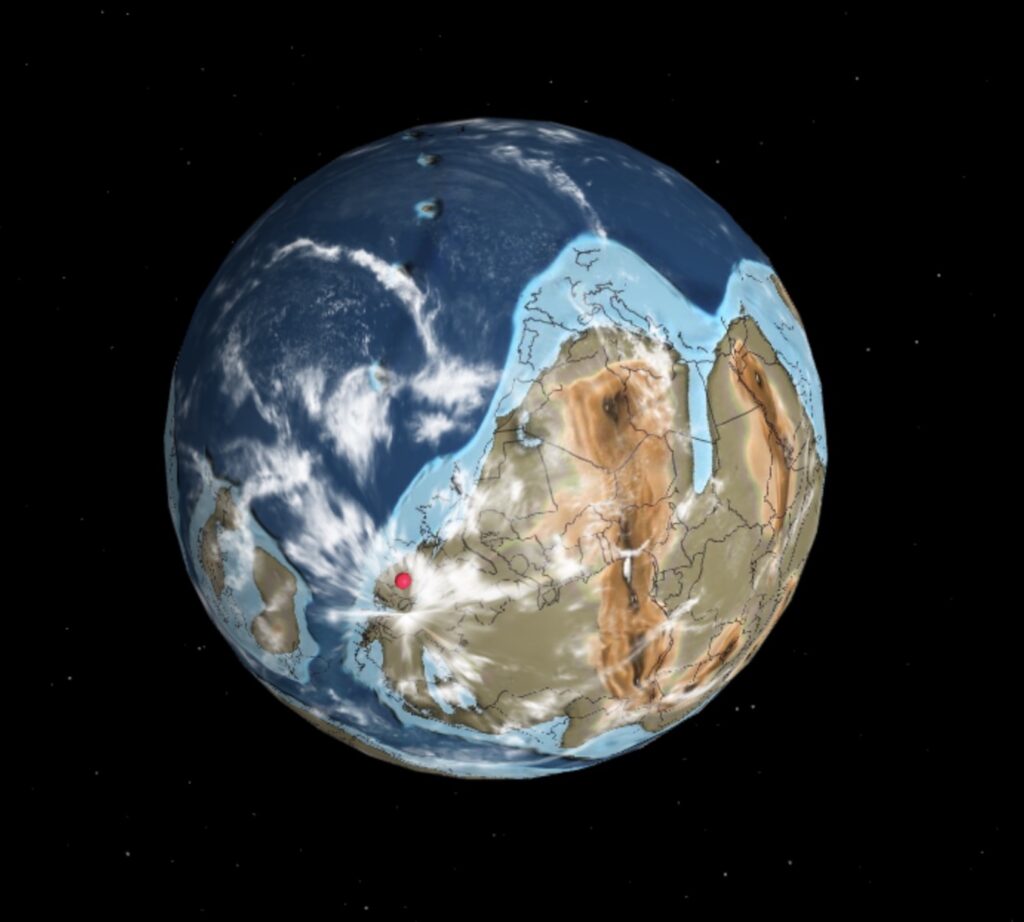Paleozoic Era – Time for Ancient Life
The Paleozoic Era, named after the Greek for ‘Ancient Life’ is split into six geological periods.
Paleozoic Era 1: The Cambrian Period – An Explosion in Life
Key Events
- There is an explosion in the diversity of life on Earth, although there are also ‘extinction events’ where populations are wiped out.
- Marine life flourishes, but the land remains comparatively barren.
- The first representatives appear of most of the large groups (‘phyla’) living today.

Facts, Debates & Trivia
- The name comes from ‘Cymru’ (Wales), where Britain’s Cambrian rocks are best exposed.
- Arthropods (creatures with exoskeletons), like trilobites or shrimps, are very common during this period.
- The oldest rocks in Cornwall, at Old Lizard Head, form during the Cambrian Period around 500 million years ago.

Conditions
- Seas are relatively warm.
- Continents are probably dry and rocky.
- Polar ice is absent for most of the period.

Timeline
541-485.4 million years ago
(53.4 million years)


Where have you reached on the trail?


